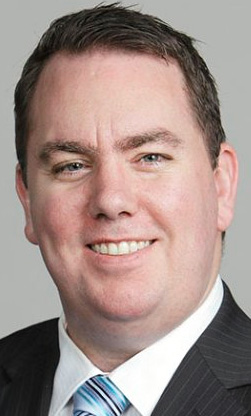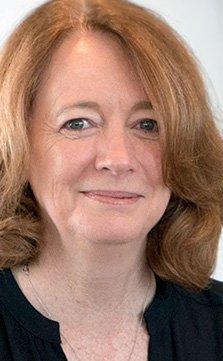

New TLDs |
Sponsored by |

|


ICANN has announced that it has indefinitely deferred the delegations of the new TLDs .CORP, .HOME, and .MAIL due to the high-risk nature of the strings. The domains name system overseer has determined the said TLDs can cause name collisions, the overlap of private and public namespaces which may result in unintended and harmful results. more
 Success has many definitions. For many within the TLD community, it is a question of volume - domains under management, revenue and so on. For others, it's more long-term - renewal rates, utilization, and year-on-year growth. For Glenn Ruscoe, the physiotherapist behind the .physio TLD, success is far grander. His 'philanthropic' approach to the world of new domain extensions stems from a desire to create a global identity for the world's third-largest health profession. more
Success has many definitions. For many within the TLD community, it is a question of volume - domains under management, revenue and so on. For others, it's more long-term - renewal rates, utilization, and year-on-year growth. For Glenn Ruscoe, the physiotherapist behind the .physio TLD, success is far grander. His 'philanthropic' approach to the world of new domain extensions stems from a desire to create a global identity for the world's third-largest health profession. more
The Justice Department has closed its investigation into VeriSign Inc.'s involvement in an auction for the .web internet domain. more
 After its initial launch in 2016 and with over 1,800 domains registered, the .tube TLD recently released over 25,000 previously reserved domains as part of a broader re-launch of its business and brand. I spoke with Rami Schwartz, Founder and CEO of .tube about the journey so far and about what's in store for .tube in the New Year... "We're used to fighting against companies much larger than us and prevailing - our history has seen us come up against the likes of the Mexican Government and Google..." more
After its initial launch in 2016 and with over 1,800 domains registered, the .tube TLD recently released over 25,000 previously reserved domains as part of a broader re-launch of its business and brand. I spoke with Rami Schwartz, Founder and CEO of .tube about the journey so far and about what's in store for .tube in the New Year... "We're used to fighting against companies much larger than us and prevailing - our history has seen us come up against the likes of the Mexican Government and Google..." more
 On 11 December 2017, about 25 participants from Europe and the US attended the public consultation for the brand new GDPR Domain Industry Playbook by eco (Association of the Internet Industry, based in Germany) at the representation of the German federal state Lower Saxony to the European Union in Brussels. The General Data Protection Regulation (GDPR) poses a challenge for the Registries, Registrars, Resellers and ICANN. more
On 11 December 2017, about 25 participants from Europe and the US attended the public consultation for the brand new GDPR Domain Industry Playbook by eco (Association of the Internet Industry, based in Germany) at the representation of the German federal state Lower Saxony to the European Union in Brussels. The General Data Protection Regulation (GDPR) poses a challenge for the Registries, Registrars, Resellers and ICANN. more
 The concept of a universal directory does not exist on the Internet. There are thousands of directories of all kinds and online Yellow Pages in many countries. All of these websites are different, accessed differently and operated differently: for example, Yellow Pages in France are different from their equivalent in Spain and Italy. There is no standard directory operated behind the same name worldwide. more
The concept of a universal directory does not exist on the Internet. There are thousands of directories of all kinds and online Yellow Pages in many countries. All of these websites are different, accessed differently and operated differently: for example, Yellow Pages in France are different from their equivalent in Spain and Italy. There is no standard directory operated behind the same name worldwide. more
 I use Paypal, and I am quite satisfied with how it helps me with my business: it is still a little hard to use, and I don't use all functions of the tool, but it is not so expensive, it is fast and efficient, and Paypal does not send so many emails. In one word, Paypal rocks... The only problem that I have with Paypal is the number of fake emails that I receive. Of course, I easily identify them as they come in and luckily, G Suite (Gmail) does an excellent job at blocking all spam and phishing. more
I use Paypal, and I am quite satisfied with how it helps me with my business: it is still a little hard to use, and I don't use all functions of the tool, but it is not so expensive, it is fast and efficient, and Paypal does not send so many emails. In one word, Paypal rocks... The only problem that I have with Paypal is the number of fake emails that I receive. Of course, I easily identify them as they come in and luckily, G Suite (Gmail) does an excellent job at blocking all spam and phishing. more
The offices of the .cat gTLD registry Fundació puntCAT were raided by the Spanish police this morning. The company reported the incident via a series of tweets as the raid was being carried out. more
 After its first edition in Valencia, Brands and Domains will travel this time to the Netherlands where the second conference will take place from the 2nd to 3rd of October 2017. This time, Dot Stories, the main organizer, chose the Hotel Amrath Kurhaus for the event. Nowadays, more than 600 applicants hold already the right to start their own dot brand, but there are not so many who have been brave enough to use it. more
After its first edition in Valencia, Brands and Domains will travel this time to the Netherlands where the second conference will take place from the 2nd to 3rd of October 2017. This time, Dot Stories, the main organizer, chose the Hotel Amrath Kurhaus for the event. Nowadays, more than 600 applicants hold already the right to start their own dot brand, but there are not so many who have been brave enough to use it. more
 With over 600 "dot Brands" applied for in 2012, and hundreds now launched, 2017 seems poised to be the Year of dotBrand! "dotBrands" are top level domains (TLDs) that use the brand name to the right of the dot, as in www.mabanque.bnpparibas or www.home.cern. Many large companies across nearly every industry applied, including Google, Amazon, Citibank, VISA, McDonalds, Sony, HBO, Alibaba, and Hermes. more
With over 600 "dot Brands" applied for in 2012, and hundreds now launched, 2017 seems poised to be the Year of dotBrand! "dotBrands" are top level domains (TLDs) that use the brand name to the right of the dot, as in www.mabanque.bnpparibas or www.home.cern. Many large companies across nearly every industry applied, including Google, Amazon, Citibank, VISA, McDonalds, Sony, HBO, Alibaba, and Hermes. more
 Almost every country code Top-Level Domain (ccTLD) has had some kind of rough and clumsy start at its sunrise. Internet was young, everything was new, and whoever took the national TLD first, got power over it. The situation eventually sorted out, and now most ccTLDs are drama free, well-operated for the benefit of people and the Internet communities in those countries. Unfortunately, not in Slovakia. more
Almost every country code Top-Level Domain (ccTLD) has had some kind of rough and clumsy start at its sunrise. Internet was young, everything was new, and whoever took the national TLD first, got power over it. The situation eventually sorted out, and now most ccTLDs are drama free, well-operated for the benefit of people and the Internet communities in those countries. Unfortunately, not in Slovakia. more
An arbitration panel has given Amazon.com Inc. a new shot at securing the .amazon top-level domain which the company has been fighting for since 2014. more
 The Anti-Phishing Working Group has released its latest Global Phishing Survey, written by myself and Rod Rasmussen. This report comprehensively examines a large data set of more than 250,000 confirmed phishing attacks detected in 2015 and 2016. By analyzing this cybercrime activity, we have learned more about what phishers have been doing, and how they have done it. Unfortunately, there's more phishing than ever, and phishers are registering more domain names than ever. more
The Anti-Phishing Working Group has released its latest Global Phishing Survey, written by myself and Rod Rasmussen. This report comprehensively examines a large data set of more than 250,000 confirmed phishing attacks detected in 2015 and 2016. By analyzing this cybercrime activity, we have learned more about what phishers have been doing, and how they have done it. Unfortunately, there's more phishing than ever, and phishers are registering more domain names than ever. more
 Three years ago, my team and I launched .xyz with the mission of bringing competition, choice, and innovation on the internet. .xyz was probably the only domain extension that had no built-in meaning, included very few domains priced at a premium, and relied on low margins and high volume. We brought with it the message that .xyz was for every website, everywhere. And instead of targeting one vertical, we connected with the next generation of internet users... more
Three years ago, my team and I launched .xyz with the mission of bringing competition, choice, and innovation on the internet. .xyz was probably the only domain extension that had no built-in meaning, included very few domains priced at a premium, and relied on low margins and high volume. We brought with it the message that .xyz was for every website, everywhere. And instead of targeting one vertical, we connected with the next generation of internet users... more
 I'm excited! Not because of the 30 hours that it will take me to get to Johannesburg, but because this ICANN meeting will be the second time we've put the Meeting B Policy Forum to the test. If the second time is a charm then hopefully we'll have cemented the Policy Forum into the ICANN meeting structure, and we can start a conversation about having two Policy Forums each year and one AGM meeting. more
I'm excited! Not because of the 30 hours that it will take me to get to Johannesburg, but because this ICANN meeting will be the second time we've put the Meeting B Policy Forum to the test. If the second time is a charm then hopefully we'll have cemented the Policy Forum into the ICANN meeting structure, and we can start a conversation about having two Policy Forums each year and one AGM meeting. more